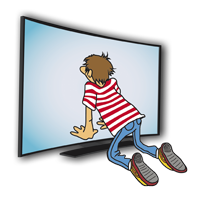Author: Arantxa Vizcaino– Translation: Erika-Lucia Gonzalez-Carrion
In scientific writing, authors must cite sources. Theoretical bases that, by means of direct and/or paraphrased constructions, gather the ideas of previous research that allow the author to demonstrate his or her understanding of the area of study, support arguments with pre-existing results, credit the work of other researchers and prevent accusations of plagiarism. These citations are delimited in a list of references at the end of the writing, which allow the community of readers to access the work. As we have read previously, we have standardized models such as APA 7ª Ed. while constantly updating them over time to adapt to the requirements of the multiple formats and documents to be consulted.

In scientific publications, we can find numerous styles: APA, Harvard, Chicago, Vancouver, Oxford, IEEE… In fact, more than once we have recognized one of these models, but we find a publication that indicates its use while modifying various aspects of it. Why is your APA, Harvard, Chicago… not the same as the one in the official guides? If you have not yet observed this variation, it is important that you always ask yourself before reviewing and adapting your reference style to a target scientific publication for your manuscript:
- What style of references do you apply both in the text and in the final listing?
- Does the style correspond to the official guide?
- What differences do you see between the official format and that of the journal?
Once you have answered these main questions, you can proceed to the examination and formatting of references. But how?
- Read rigorously the reference style of the journal to which you will send your manuscript (never resort exclusively to the official guides of that style). Is it APA 6/7th Ed., Chicago, Vancouver…?
2. Next (and many of the journals advise it in their own guides for authors), download some of their last publications (preferably from the last months), to check if the format of the guide corresponds to the published one.
In this way, you can find variations that make the reference style of a scientific publication “unique”. The correct adaptation of the citations and references to the journal will inform the Editors that you have read its regulations and that, consequently, you wish them to consider their revision.
